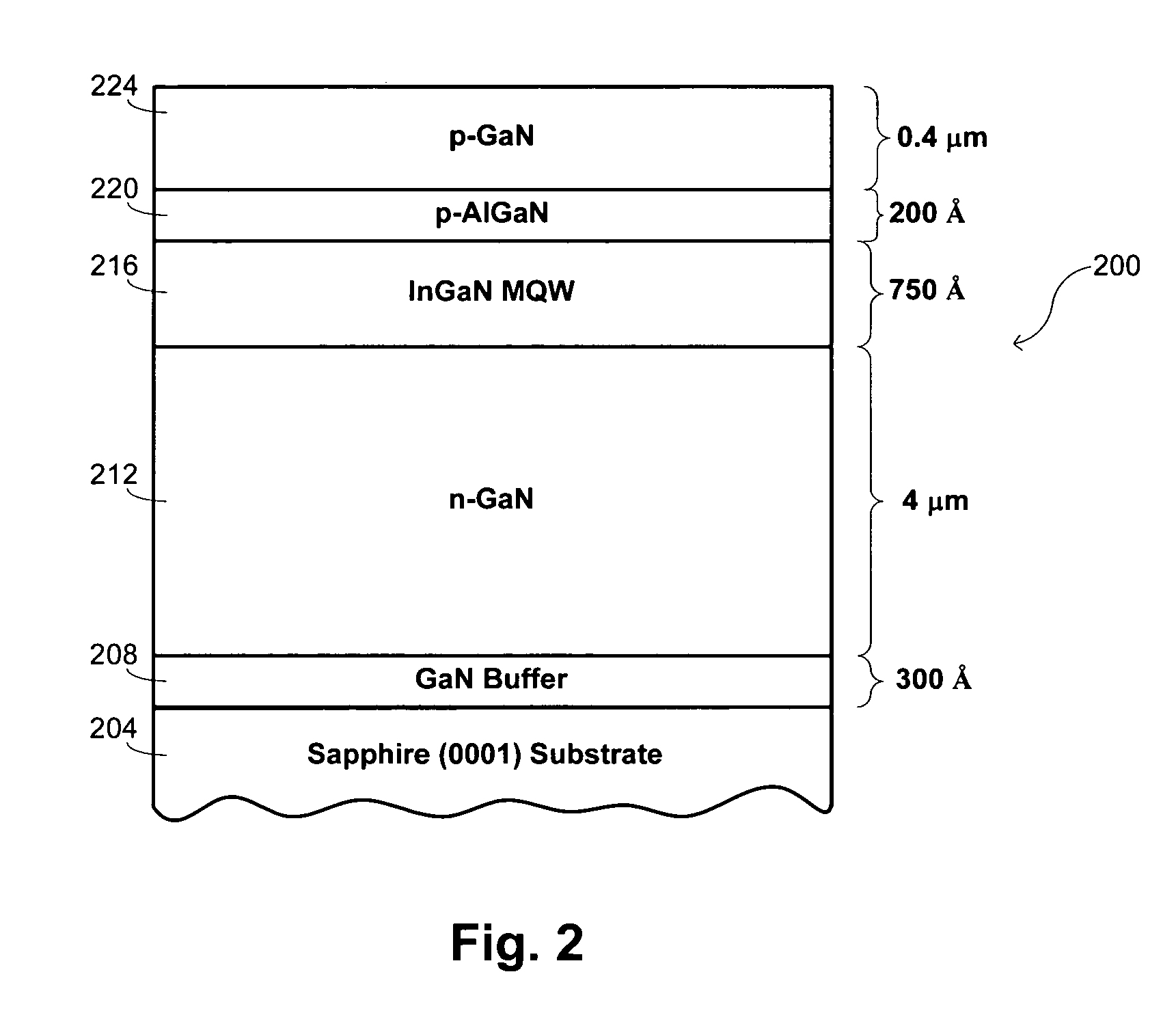Hotwall reactor and method for reducing particle formation in GaN MOCVD
a technology reactor, which is applied in the direction of chemically reactive gas growth, crystal growth process, polycrystalline material growth, etc., can solve the problems of gan film deposition process adding additional cost and time, hvpe also has drawbacks, and formation of anti-etch layer
- Summary
- Abstract
- Description
- Claims
- Application Information
AI Technical Summary
Benefits of technology
Problems solved by technology
Method used
Image
Examples
example 1
A. Example 1
Reduction in Particle Formation
[0077]Simulations were run by STR of GaN film growth in a Thomas Swan reactor with a close-coupled showerhead injector within a hotwall reactor. Pressure was set to 200 Torr; reaction zone temperature was set to 1050° C.; inlet conditions were set to: NH3 15 slm, H2 20 slm, TMG 135 sccm; and bottom purge inlet was set to H2 3 slm. Results of the simulation showed approximately 13% Ga was in particle form at the outlet of the reaction, while approximately 2.6% of the Ga was in particle form at the back edge of the first wafer.
[0078]Additional simulations were run comparing varying plate temperatures, to demonstrate the effect on particulate distribution along the plate. Pressure was set to 200 Torr; reaction zone temperature was set to 1050° C.; inlet conditions were set to: NH3 15 slm, H2 20 slm, TMG 135 sccm; and bottom purge inlet conditions were set to: H2 3 slm. As shown in FIGS. 7A (1050° C. plate temperature), 7B (normal plate tempera...
example 2
B. Example 2
Increase in Deposition Rate Under Substantially Isothermal Conditions
[0079]Simulations were also run to investigate the effect of hotwall depositions on deposition rate. Pressure was set to 200 Torr; reaction zone temperature was set to 1050° C.; inlet conditions were set to: NH3 15 slm, H2 20 slm, TMG 27 sccm, and bottom purge inlet conditions were set to: H2 3 slm. As shown in FIG. 8, the top deposition rate was found for the 1050° C. plate (*), ranging from just above 12 μm / hr to just below 10 μm / hr. The radiatively heated plate (x) was found to have a deposition rate just above 10 μm / hr at the near end to just above 8 μm / hr at the far end, while the 30° C. plate (▴) was found to have a deposition rate of just above 8 μm / hr at the near end to just above 6 μm / hr at the far end. As such, the simulations predict improved deposition rates in hotwall reactors for reaction conditions as isothermal conditions are approximated.
[0080]The results of additional simulations are s...
PUM
| Property | Measurement | Unit |
|---|---|---|
| thickness | aaaaa | aaaaa |
| pressure | aaaaa | aaaaa |
| temperature | aaaaa | aaaaa |
Abstract
Description
Claims
Application Information
 Login to View More
Login to View More - R&D
- Intellectual Property
- Life Sciences
- Materials
- Tech Scout
- Unparalleled Data Quality
- Higher Quality Content
- 60% Fewer Hallucinations
Browse by: Latest US Patents, China's latest patents, Technical Efficacy Thesaurus, Application Domain, Technology Topic, Popular Technical Reports.
© 2025 PatSnap. All rights reserved.Legal|Privacy policy|Modern Slavery Act Transparency Statement|Sitemap|About US| Contact US: help@patsnap.com



